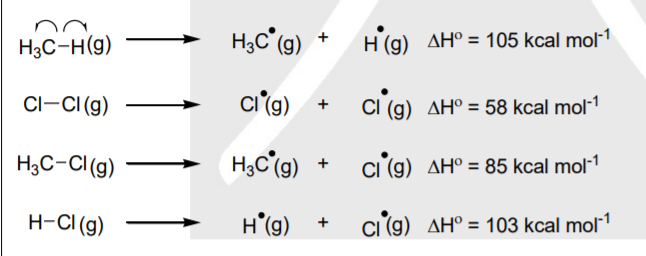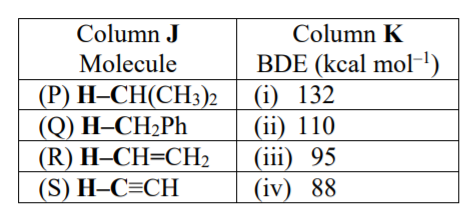Energy required to break one bond in DNA is
10−10J
10−18J
10−7J
10−20J
The correct Answer is:D
The energy required to break one bond in DNA is 10−20J.
Topper's Solved these Questions
- WORK, ENERGY AND POWERBOOK - MTG GUIDECHAPTER - WORK, ENERGY AND POWEREXERCISE - NEET CAFE (TOPICWISE PRACTICE QUESTIONS) (MOTIN IN A VERTICAL CIRCLE)
7 Videos
- WORK, ENERGY AND POWERBOOK - MTG GUIDECHAPTER - WORK, ENERGY AND POWEREXERCISE - NEET CAFE (TOPICWISE PRACTICE QUESTIONS) (COLLISIONS)
35 Videos
- WORK, ENERGY AND POWERBOOK - MTG GUIDECHAPTER - WORK, ENERGY AND POWEREXERCISE - NEET CAFE (TOPICWISE PRACTICE QUESTIONS) (POTENTIAL ENERGY AND CONSERVATIVE FORCES)
19 Videos
- THERMODYNAMICSBOOK - MTG GUIDECHAPTER - THERMODYNAMICSEXERCISE - AIPMT/NEET (MCQs)
26 Videos
Similar Questions
Examine table 3 and express (a) energy required to break one bond in DNA in eV, (b) typical energy of a proton in a nucleus in eV, (c ) energy released in burining 1000 kg of coal in kilicalories
View SolutionExamine table.s and express a) The energy required to break one bond in DNA in eV, b) the kinetic energy of an air molecule (10−2 J in eV, c) The daily intake of a human adult in kilocalories.
View Solution
Knowledge Check
Total energy required to break all the bonds in the gaseous state molecule of AB2 is xkJmol−1. Then the bond energy of the bond A-B in the molecule will be ________.
Ax2kJmol−1Bx3kJmol−1C2xkJmol−1D2x2kJmol−1The energy required to break one mole of CL-CL bondscl2is242kJmol−1. The largest wavelength of light capable of breaking a single CL-CL bond is
A700 nmB494 nmC596 nmD640 nmThe energy required to break one mole of Cl-Cl bonds in Cl2 is 242 kJ mol−1. The longest wavelength of light capable of breaking a single Cl-Cl bond is
A594nmB640nmC700nmD494nm
Express (a) the energy required to break one bond in DNA (10−10J) in eV.
(b) the kinetic energy of an air molecule (10−21J) in eV.
(c) the daily intake of a human adult (107J) in kilocalories.
View SolutionExamine table 3 and express (a) energy required to break on bond in DNA in eV, (b) typical energy of a proton in a nucleus in eV, (c ) energy released in burning 1000 kg of coal in kilocalories.
View SolutionThe amount of energy required to break a bond is same as the amount of energy released when the same bond is formed. In gaseous state, the enrgy required for hololytic cleavage of a bond is called Bond Dissociation Energy(BDE) or Bond Strength. BDE is affected by s-character of the bond and the stability of the radicals formed. Shorter bonds typically stronger bonds. BDEs for some bonds are given below:

Correct match of the C-H bonds(shown in bold) in column J with their BDE in column K is
View SolutionThe amount of energy required to break a bond is same as the amount of energy released when the same bond is formed. In gaseous state, the enrgy required for hololytic cleavage of a bond is called Bond Dissociation Energy(BDE) or Bond Strength. BDE is affected by s-character of the bond and the stability of the radicals formed. Shorter bonds typically stronger bonds. BDEs for some bonds are given below:

For the following reaction
CH4(g)+Cl2(g)light−−→CH3Cl(g)+HCl(g)
the correct statement is
View SolutionWhy is more energy required to break a sigma bond than a pi bond?
View Solution
